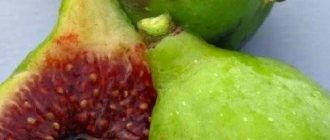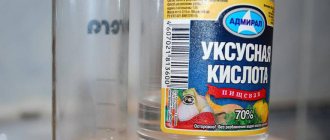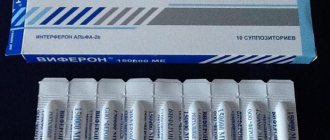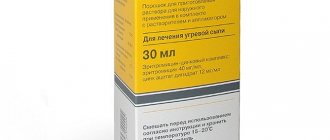Miramistin solution with gynecological attachment 0.01% 50 ml ➤ instructions for use
The drug is ready for use. Instructions for using the packaging with spray nozzle:
1. Remove the cap from the bottle and also remove the urological applicator from the 50 ml bottle.
2. Remove the supplied spray nozzle from its protective packaging.
3. Attach the spray nozzle to the bottle.
4. Activate the spray nozzle by pressing again.
Directions for using the 50 ml or 100 ml pack with gynecological attachment:
1. Remove the cap from the bottle.
2. Remove the supplied gynecological attachment from the protective packaging.
3. Attach the gynecological attachment to the bottle without removing the urological applicator.
Otorhinolaryngology.
For purulent sinusitis, during puncture the maxillary sinus is washed with a sufficient amount of the drug.
Tonsillitis, pharyngitis and laryngitis are treated by gargling and/or irrigation using a spray nozzle, pressing 3-4 times, 3-4 times a day. The amount of drug per rinse is 10-15 ml.
In children. In case of acute pharyngitis and/or exacerbation of chronic tonsillitis, the pharynx is irrigated using a spray nozzle. Children aged 3-6 years: by pressing the head of the spray nozzle once (3-5 ml per irrigation), 3-4 times a day, for children aged 7-14 years by pressing twice (5-7 ml per irrigation) , 3-4 times a day, for children over 14 years of age, by pressing 3-4 times (10-15 ml per irrigation), 3-4 times a day. Duration of therapy
ranges from 4 to 10 days, depending on the timing of remission. Dentistry.
For stomatitis, gingivitis, periodontitis, it is recommended to rinse the mouth with 10-15 ml of the drug, 3-4 times a day.
Surgery, traumatology, combustiology.
For preventive and therapeutic purposes, the surface of wounds and burns is irrigated, wounds and fistula tracts are loosely tamponed, gauze swabs soaked in the drug are fixed. The treatment procedure is repeated 2-3 times a day for 3-5 days. A highly effective method of active drainage of wounds and cavities with a daily consumption of up to 1 liter of the drug.
Obstetrics, gynecology.
In order to prevent postpartum infection, it is used in the form of vaginal irrigation before childbirth (5-7 days), during childbirth after each vaginal examination and in the postpartum period, 50 ml of the drug in the form of a tampon with an exposure of 2 hours, for 5 days. For the convenience of vaginal irrigation, the use of a gynecological nozzle is recommended. Insert the contents of the bottle into the vagina using a gynecological nozzle and perform irrigation.
When women give birth by cesarean section, the vagina is treated immediately before the operation, the uterine cavity and the incision on it are treated during the operation, and in the postoperative period tampons soaked in the drug are inserted into the vagina with an exposure of 2 hours for 7 days. Treatment of inflammatory diseases is carried out over a course of 2 weeks by intravaginal administration of tampons with the drug, as well as by the method of medicinal electrophoresis. Venereology.
For the prevention of sexually transmitted diseases, the drug is effective if it is used no later than 2 hours after sexual intercourse. Using a urological applicator, insert the contents of the bottle into the urethra for 2-3 minutes: for men (2-3 ml), for women (1-2 ml) and into the vagina (5-10 ml). For convenience, the use of a gynecological attachment is recommended. Treat the skin of the inner thighs, pubis, and genitals. After the procedure, it is recommended not to urinate for 2 hours.
Urology.
In the complex treatment of urethritis and urethroprostatitis, 2-3 ml of the drug is injected into the urethra 1-2 times a day, the course is 10 days.
Expiration date Miramistin
Like any medicine, Miramistin has a certain period during which the drug can be used - 3 years. The dates when the drug was released and until which the drug can be used are indicated at the bottom of the paper label of the bottle and on the cardboard box, indicating the month and year.
The period of permissible use both at room temperature and when stored in the refrigerator is the same - 3 years. Storage temperature should not be higher than 25°C.
Is it possible to use the drug if the period expires in 5-10 days? Yes, completely. If there are several days left until the end of the specified month, then you can use it, but after the specified month you need to take a new package.
Important! Miramistin factory bottles have a first opening ring. Detaching this ring from the lid confirms that the package has been opened. The shelf life of an opened bottle of Miramistin is much shorter - 1 month under the same temperature conditions.
During the period of permissible storage, no significant changes occur in the solution. After the expiration date, the solution may change its external characteristics (color, smell, taste, presence of sediment), lose antimicrobial activity, and become toxic and allergenic. After an acceptable period of time, irreversible oxidative reactions begin to occur in the solution, destroying the structure of the drug and changing its properties.
How to understand that a defective drug is not suitable for use, how to identify an expired drug? The first thing that will help assess the suitability of a medicine is visual inspection. Normally, the solution is transparent, with a slight specific odor and bitter taste, without precipitation. Any deviations - a change in color, the appearance of a pungent odor, the formation of sediment or flakes - indicate the unsuitability of the solution. The packaging must be intact. A bottle with melted areas or cracks and other mechanical damage also indicates the unsuitability of Miramistin. Analysis of the permissible shelf life relative to real time will show whether the solution is suitable for use. The opened package must indicate the exact date the bottle was opened, this will make it possible to determine whether a month has passed since opening. After the expiration date, the solution cannot be used.
Using an expired drug can cause harm to human health. Using an unsuitable Miramistin solution can lead to allergic reactions. They manifest themselves in the form of skin rash, Quincke's edema and anaphylactic shock. Possible development of toxic and food poisoning. When using an expired solution locally, toxic dermatitis may develop.
Clinical researches
According to the results of clinical trials of the ASEPTA® rinse After 3 weeks of using the ASEPTA® rinse, gum bleeding is reduced by 28.3%, inflammation is reduced by 32.3% and the hygienic condition of the oral cavity is improved by 33.5%.
The mouthwash is designed to protect gums from inflammation and improve oral hygiene and is recommended for use by patients suffering from:
- acute and chronic gingivitis;
- acute and chronic periodontitis;
- stomatitis;
- post-extraction alveolitis;
- toothache of infectious origin.
Sources:
- The role of anti-inflammatory rinse in the treatment of periodontal diseases (L.Yu. Orekhova, A.A. Leontyev, S.B. Ulitovsky) L.Yu. OREKHOVA, Doctor of Medical Sciences, Prof., Head of Department; A.A. LEONTIEV, dentist; S.B. ULITOVSKY, Doctor of Medical Sciences, Prof. Department of Therapeutic Dentistry of St. Petersburg State Medical University named after. acad. I. P. Pavlova
- Report on clinical trials to determine/confirm the preventive properties of commercially produced personal oral hygiene products: mouth rinse "ASEPTA PARODONTAL" - Solution for irrigator." Doctor of Medical Sciences Professor, Honored Doctor of the Russian Federation, Head. Department of Preventive Dentistry S.B. Ulitovsky, doctor-researcher A.A. Leontiev First St. Petersburg State Medical University named after academician I.P. Pavlova, Department of Preventive Dentistry.
- Report on determining/confirming the preventive properties of commercially produced personal oral hygiene products: Asepta toothpaste used in combination with Asepta mouthwash and Asepta gum balm Head. Department of PFS Doctor of Medical Sciences Professor S.B. Ulitovsky St. Petersburg State Medical University named after Academician I.P. Pavlova. Faculty of Dentistry. Department of Preventive Dentistry.
Indications for use of Miramistin
Rinsing is often prescribed in the following cases:
- before extirpation (removal) of the tooth, inflammation (pulpitis, periodontitis) was diagnosed;
- the gums were additionally injured (for example, the gumboil was opened, drainage was installed to remove pus);
- There are sources of infection in the oral cavity (carious teeth, stomatitis, tartar, inflammation of the gums, etc.).
These factors significantly increase the risk of wound infection. You can prevent it by knowing how to rinse your mouth. This disinfects the hole, destroys pathogenic microflora, so the likelihood of developing complications is reduced. The main rule is that rinsing should not be too intense. Additionally, the doctor may prescribe antibacterial and anti-inflammatory non-steroidal drugs.
Rinsing is often useful after wisdom tooth removal, since the procedure is traumatic. Eights grow normally only 20% of the time. In 8 out of 10 patients, wisdom teeth are removed at the eruption stage. Due to the peculiarities of their incorrect placement, the tissues are severely damaged, so the recovery period is delayed. Rinsing allows you to speed it up.
Composition and release forms of the drug
"Miramistin" is a drug based on benzyldimethyl ammonium chloride. The concentration of the active component is 0.01%. The drug occupies a leading position among antiseptics and has a wide range of applications. Often used in dentistry. Its action is aimed at combating infections of a bacterial, fungal and viral nature. Miramistin also accelerates wound healing. By stimulating phagocytosis, it enhances the local immune response.
The drug is available in different forms. For rinsing, an aqueous or alcohol solution is used. It is transparent, practically odorless and tasteless.
Contraindications
There are no critical contraindications for therapy or prophylactic use of Miramistin. Do not use the product for children under three years of age. The drug is usually stopped only if intolerance is detected, which is very rare.
Special Recommendations
Despite its extensive use in various fields of medicine and the almost complete absence of contraindications, in some cases Miramistin is used especially carefully.
Miramistin for children
The drug is allowed to be taken by children over three years of age. The method of administration is the same as for adults, but the dose is significantly less depending on age.
Miramistin for pregnant and lactating women
There are no specific warnings for pregnant women or during breastfeeding not to take the drug. Rather, on the contrary, Miramistin is a drug that can be freely used during pregnancy and lactation. However, any medications must be prescribed by the doctor who sees the woman. It does not affect the body’s processes in any way and is not absorbed into the blood, which makes the use of the drug as safe as possible. Most often, the drug is prescribed to pregnant women to prevent the occurrence of gynecological inflammation both during pregnancy and after childbirth.
Miramistin inside
You should not drink this medicine. It is prescribed orally by introducing it into the body by other means. However, if you swallow a little medicine with saliva during treatment of the oral cavity or pharynx, nothing critical will happen.
Miramistin in gynecology
To avoid the development of infectious and inflammatory diseases, after childbirth, vaginal irrigation is carried out for the time recommended by the doctor. Usually the course lasts up to 7 days. Also during childbirth and after completion, the vagina is treated with a tampon with Miramistin every 2 hours. Using a special gynecological nozzle, irrigation can be carried out directly inside the vagina. If delivery is not carried out naturally, but through a cesarean section, the vagina is treated with medicine before the operation. During the operation itself, the uterine cavity and the site of its incision are disinfected with the help of a medicine. After the completion of the caesarean section, the use of Miramistin continues. They moisten tampons, which are regularly placed inside the vagina for 7 days.








